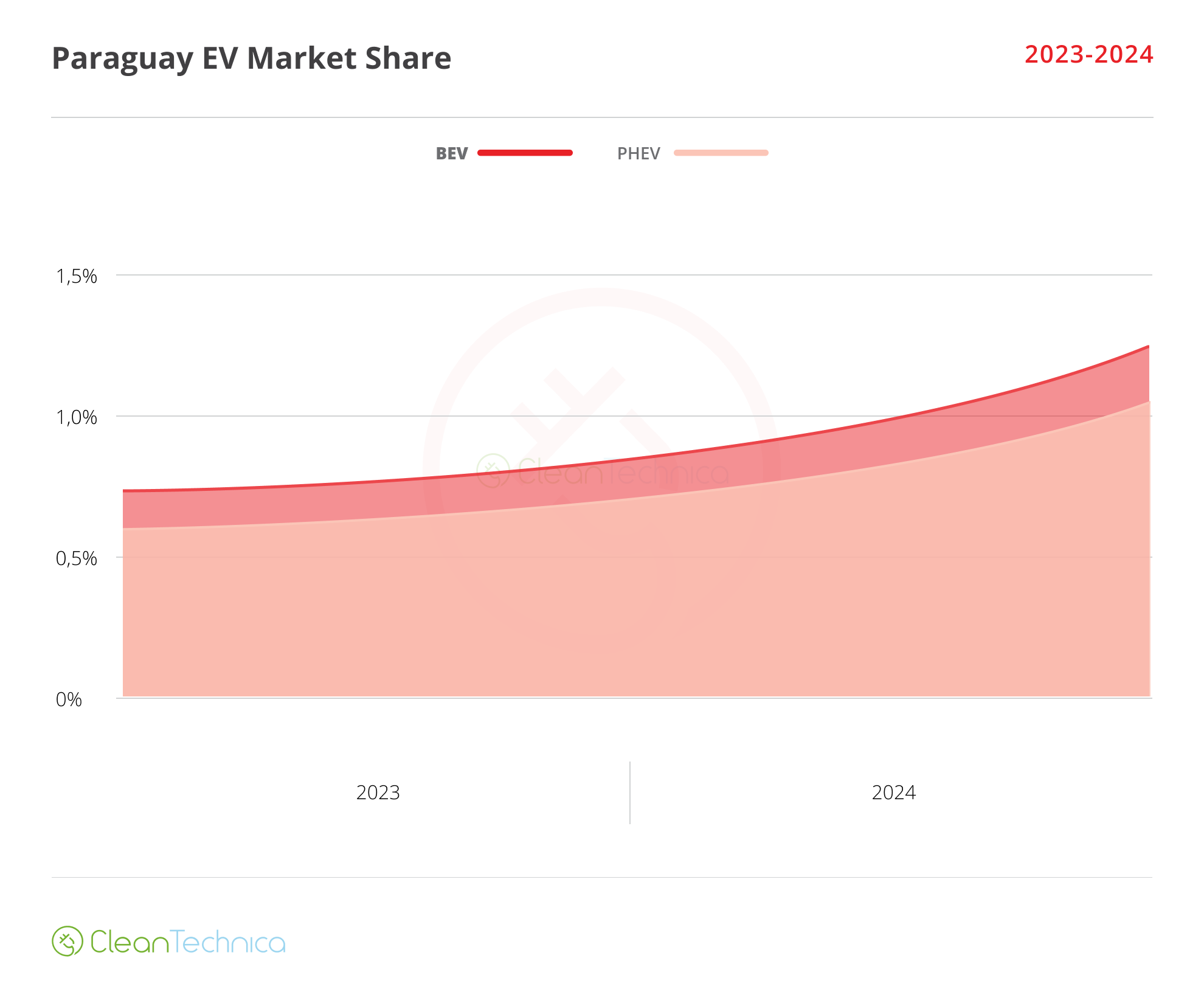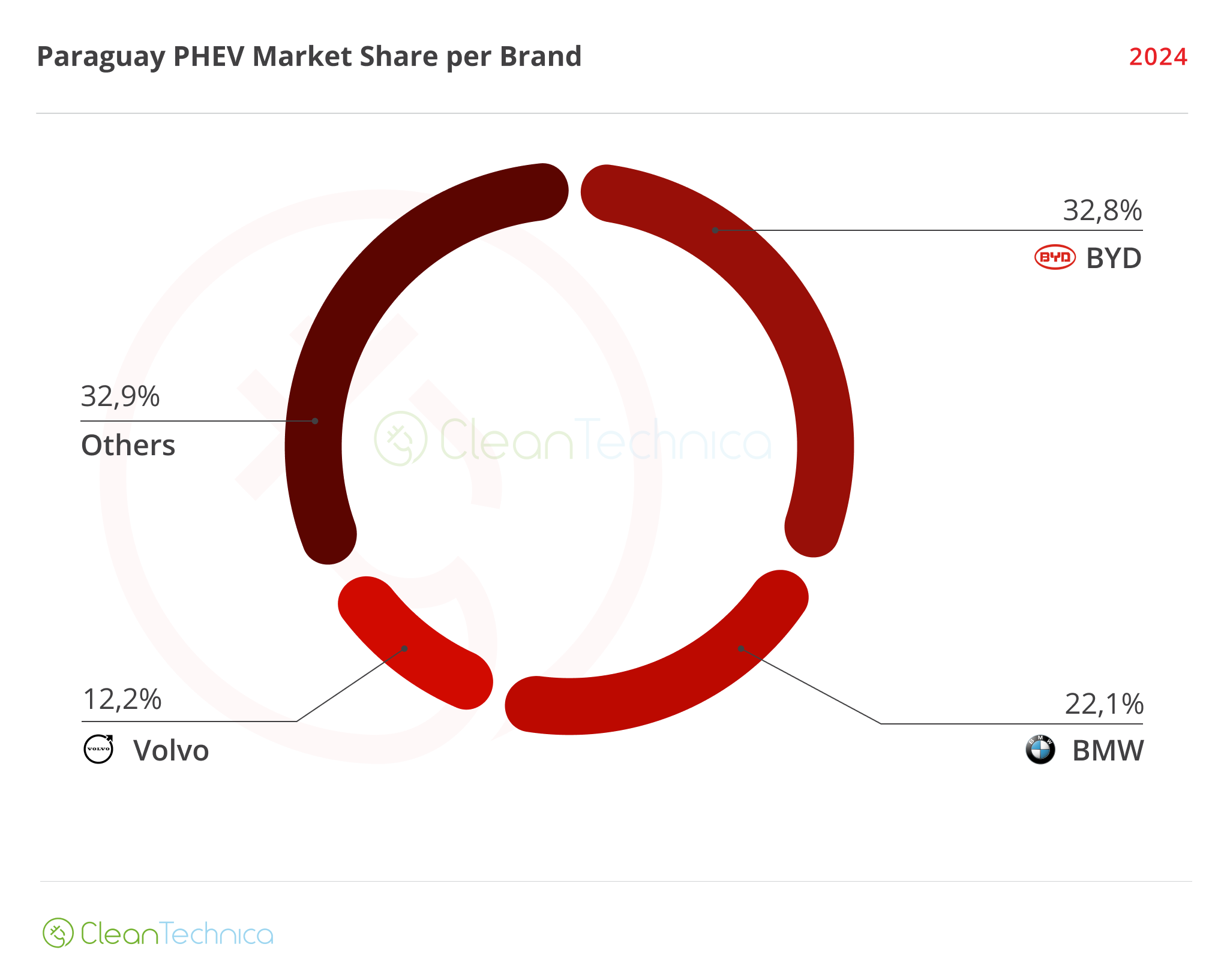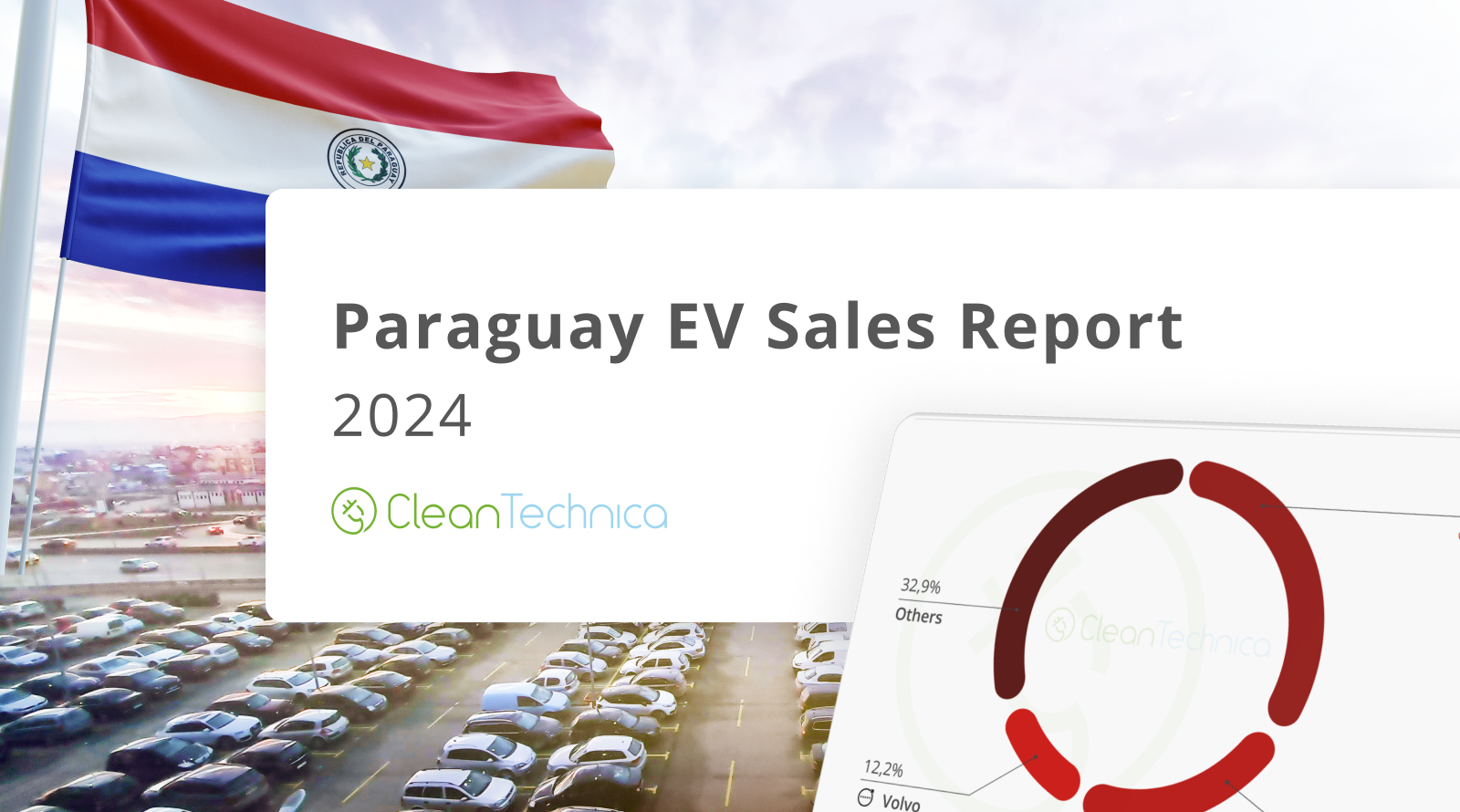Sign up for daily news updates from CleanTechnica on email. Or follow us on Google News!
If there’s one mysterious country in South America, it’s Paraguay.
Its history is out of the realm of reality. The first country to effectively stabilize in South America after Independence, becoming a “Perpetual Dictatorship” from 1816 under the paternalistic, isolationist, and all-together eccentric Gaspar Rodríguez de Francia, Karai Guasu (“Great Lord” in Guarani), Paraguay was effectively an island until 1840. These old days are remembered in folklore, even here in Colombia, where I learned as a child of the times when a powerful local industry was successfully developed by a landlocked nation, only to be later destroyed by force*.
It happened during a total war, the bloodiest in that century in South America, when Paraguay faced alone the “Triple Alliance” of Brazil, Argentina, and Uruguay. Paraguayan men fought quite literally until the last man … or almost, as estimates indicate as much as 90% of the male population died between 1864 and 1870. So dire was the situation that the Radical Liberals of the then United States of Colombia declared that, should Paraguayans lose their nation, they would be welcomed and automatically given Colombian nationality, as no man (or woman) should have to live without a nation to call its own.
Yet Paraguay would survive and retain its militaristic nature, becoming a hub for Mennonites and other religious minorities as one of the few countries in this period without conscription: having a gun and knowing how to use it was seen as an honor, not a duty. This would serve them during the bloodiest war in South America in the 20th century (yes, they were also involved in that one), where they defeated a much larger and better armed Bolivia during the “War of Chaco.”
Oh, and did I mention that they are the only country on the continent where most of the population still speaks its native language (guaraní)? And that most of its capital is not even available in Google Street View? Talk about mysterious! It comes as no surprise that most of us on the continent know very little about Paraguay.
Which is why I was so excited when I managed to get my hands on official data showing that even in this enigmatic land, we see the transition to EVs happening in full swing!
Market Overview
I hope our readers may pardon my rant. I’m a historian, after all, and Paraguay’s history is truly fascinating. Hopefully, one day I’ll know more about it.
But our subject here is EVs. As per the available information, Paraguay has been steadily advancing towards electrification, with EVs accounting for 2.4% sales in 2024, compared with 1.4% in 2023:

Sales more than doubled to over 800 units in 2024, most of them being BEVs. The number may seem small, but Paraguay’s market is also very small, barely surpassing 35,000 units that same year:

Now, this data is for imports, not registrations, but as far as I could find, there is no local assembly in the country … except for some JAC models which were being assembled in 2017. I presume these are not being produced anymore, but if any Paraguayan can enlighten me, I would appreciate it. If there’s a substantial number of vehicles produced in the country, market share could be lower, but I’m almost certain that’s not the case.
Unlike other small countries, Paraguay seems to have a very competitive EV landscape. Data on market share is presented separately for BEVs and PHEVs: Volvo leads BEV sales, accounting for 30% of them, followed by BYD with 16%. Other important brands are Audi, BMW, and Leapmotor:

PHEV sales are meanwhile dominated by BYD, followed by BMW and Volvo:

It’s worth mentioning that, like Uruguay and Ecuador, Paraguay has fallen for Nissan’s convenient nomenclature: the Nissan X-Trail E-Power (a non-plug-in EREV) is presented as a BEV. The data was revised before publishing and the 80-something X-Trails sold were subtracted from it.
Final Thoughts
Paraguay is known by its eccentric history, its Yerba Mate (a caffeinated hot beverage widely consumed there and in Argentina), its indigenous language … and it’s also known for being unknown (pardon the pun), a land sort of isolated unto itself.
But Paraguay is not known for being a hyper-environmentalist country of sorts (as, arguably, are Uruguay and Costa Rica), willing to go one step ahead in innovation in order to curb fossil fuel usage. It’s also not as wealthy as either of these countries, yet still it moves ahead in a transition that we were once told was only going to happen in the wealthiest or the most progressive of countries. May this serve as a reminder that middle-income and poor countries have their own incentives to electrify, and sometimes these incentives are stronger in less wealthy nations. Spoiler alert: more articles are coming on these matters.
Back on topic, most important is the fact that Paraguay has massive amounts of available renewable electricity thanks to the massive Itaipu Hydroelectric Dam, which recently became the hydroelectric dam with the largest historical production. Co-owned by Brazil and Paraguay, a lot of the Paraguayan production is not needed, so it’s exported right back into Brazil, making Paraguay one of the few countries where “electricity” accounts for a significant part of exports (12.5%). This means that, should EVs be adopted en masse, Paraguay will have the electricity readily available, and it will save more money on fuel imports than it loses on electricity exports.
At last, in February, 20 electric buses arrived in Paraguay from the Taiwanese manufacturer Master Bus, with 10 more on the way. As with other countries, Paraguay is also noticing the benefits of electric public transportation, and this is expected to work as a pilot that will bring more e-buses later on.
2.4% may not seem like much, but it was only three years ago that we were celebrating Colombia getting over 2% market share, and less than two years ago that Brazil got there. Paraguay is racing ahead of many other economies in the region (including Mexico, Peru, and even Chile), and it seems like it could be one of the countries to focus on in the coming years.
*The economic history of Paraguay is far more complex than this, but for the purpose of mystery, we’ll leave it at that. Also, because this was supposed to be an article about EVs.
Whether you have solar power or not, please complete our latest solar power survey.
Chip in a few dollars a month to help support independent cleantech coverage that helps to accelerate the cleantech revolution!
Have a tip for CleanTechnica? Want to advertise? Want to suggest a guest for our CleanTech Talk podcast? Contact us here.
Sign up for our daily newsletter for 15 new cleantech stories a day. Or sign up for our weekly one if daily is too frequent.
CleanTechnica uses affiliate links. See our policy here.
CleanTechnica’s Comment Policy

